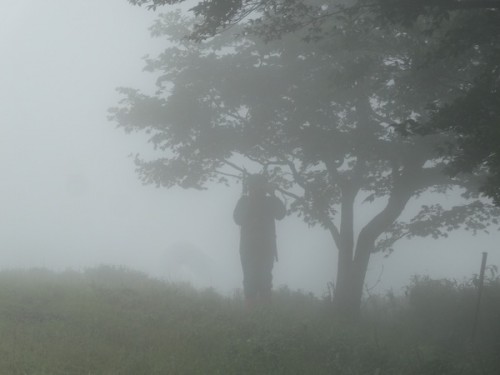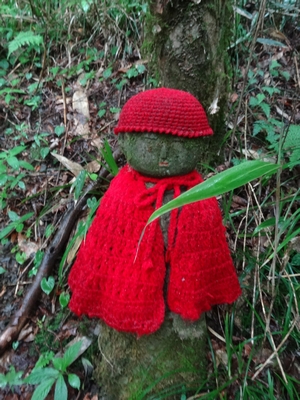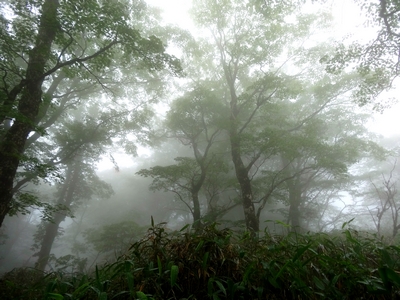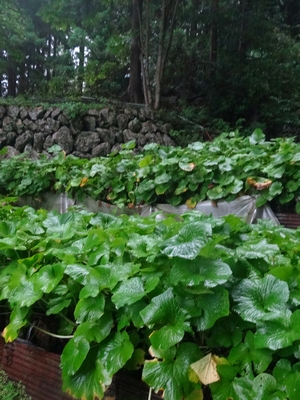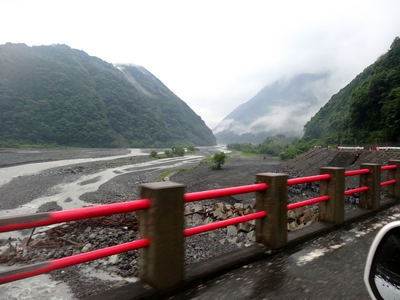The midday mist
turned us into shadows,
the rooty, spongy ground
lightened our step,
and once we were wet to the bone–
and knew we would get no wetter–
we minded not
when gusts pelted us with rain,
for we could marvel at the maple leaves,
themselves appreciating greatly
that time-proven partner
–the wet gray–
who enabled them to show off
(so nimble on their firm little stems)
what dancing stars they were,
and what rollicking constellations they could be . . .
and I knew I’d been on Aozasa Mountain before,
long ago,
as a little boy,
half a world away,
on a bright June day,
barefoot,
lanky legs flying through fescue,
a skinny arm extended,
raking white petals
in a long line of gardenias,
then stopping,
turning to see,
through a single eye,
a single squinting eye
(a foggy lens, the center wiped clean and clear),
the swirls of fragrance
rise up to mingle
with green pine and blue sky . . .
a fragrance unforgettable,
a fragrance soon to be forgotten.
* * *
July 13. Aozasayama (Aozasa Mountain).
We’d driven up through the hamlet of Utogi and reached the parking lot at Aoi Kogen. Now two of us were sitting in the back of the car, the raised hatchback shielding us from a rain that had just started back up, and two of us were standing out in the rain, rain coat hoods in full use. What to do? Call it a day? Go through with the hike?
The rain was supposed to have started later in the day, and now we all surely knew that, the most favorable scenario was going to be (most likely, probably) five hours of walking through intermittent rain. Still, when the rain would stop for a moment, I’d (we’d?) think, for just a moment, that maybe the heavens would clear up. That surely indicated something about what I (we) thought we were going to get that day, up along the ridge, whether it rained cats and dogs or not.
So we hiked as planned . . . and part of the time it did rain cats and dogs. Maybe it even rained a few tanuki and inoshishi. But once you’re wet, you’re wet, and it makes no sense to worry about it. So you don’t. You just enjoy what there is to enjoy.
The sign said this way to Jizo Toge (Jizo Pass), so we headed off that way, along the asphalt road for a while, until we came to the Jizo Toge trailhead . . . where one of the many Mr. Jizo’s was there to greet us. “You’re good,” he seemed to say. “No worries. I get wet all the time and look at me.”
It was windy as heck up at the Toge Pass, but fortunately another Mr. Jizo had a little shack of a shrine that he hung out in, and he invited us in for lunch. Delightful indeed.
And then on we went.
Along the ridge. In the fog and mist. Among the big beeches and maples. Bamboo grass everywhere. Sasa. Thus the name of the mountain.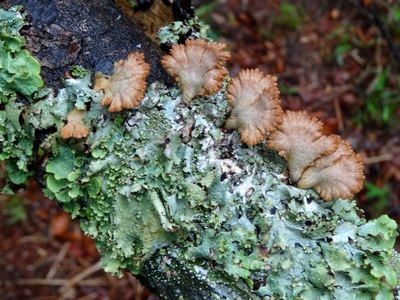 From Toge Pass, it’s a gentle ascent, but we were happy, just the same, to have the mushrooms applauding our efforts.
From Toge Pass, it’s a gentle ascent, but we were happy, just the same, to have the mushrooms applauding our efforts.
A little wet, yes, but that is one happy hiker, don’t you think?
We walked on to Mumei no Toge (No Name Pass), then on up to the summit of Aozasa (top picture), then doubled back to descend from Mumei.
That way back down to Aoi Kogen was a bit steep and I thought I’d rather go up it than down, but there was lots to please the eyes. Long stretches of cool moss and rock. Then wasabi fields.
Wasabi fields. Wet, wet, wet wasabi fields. I’m not sure, but I’m guessing this is where we picked up the leeches. If that was the case, it was lucky we didn’t ascend this way. Those little suckers would have had four or five hours to find our sweet spots. As it was, we got down in about twenty more minutes and found only about twenty leeches in our boots and on our clothes. Only one leech had latched onto human flesh. On a wrist.
Leeches are not only talented vampires, but also awesome gymnasts, amazingly flexible, and capable of extraordinary leaps and somersaults. Yes, there were a few shrieks, and a few uncomfortable moments yanking off that wrist leech with tweezers, but back in the car, down from Utogi and back on the road heading back to town, we were already laughing at the leeches. The rain, as a problem, we’d dismissed hours before.
Note: One leech had hidden really well. One of our hearty hikers found it on her shin, after she’d gotten back home. She reports it was easily done in with salt.
